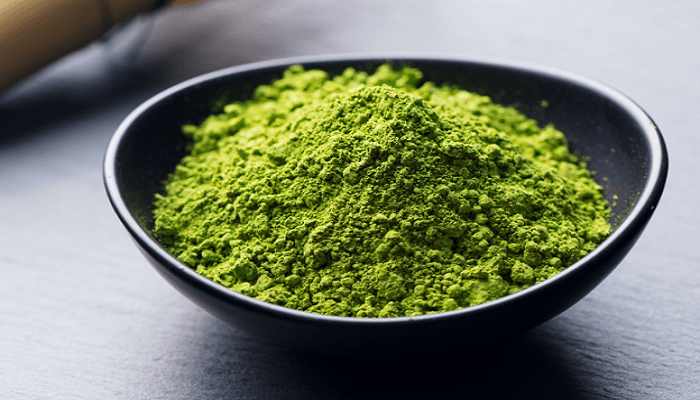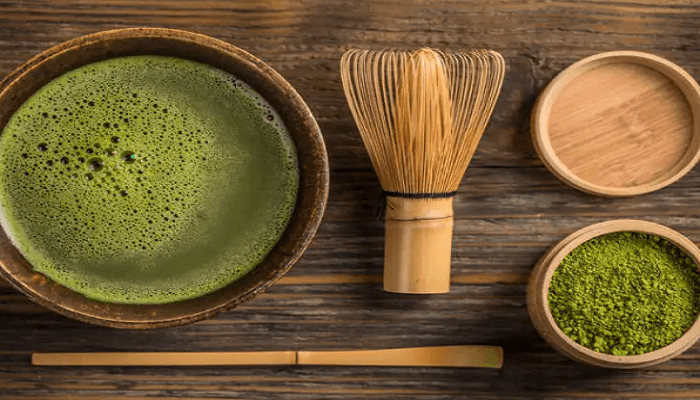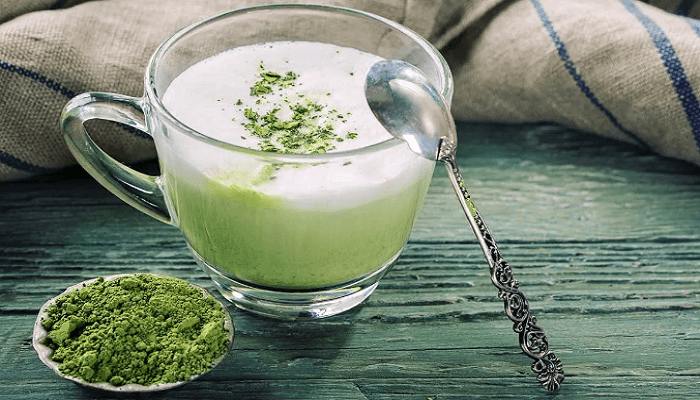Why is Matcha So Expensive – Matcha is a finely ground green tea powder that has gained popularity worldwide for its unique flavor and health benefits. However, it is also known for its high price, which has led many to wonder: Why is matcha so expensive? There are several factors that contribute to the high cost of matcha.
Understanding these factors can provide insight into why matcha remains a luxury item and may help individuals make informed decisions about consuming it.
What is Matcha?

Matcha is a type of powdered green tea that has been an integral part of Japanese culture for centuries. It is made by finely grinding specially grown green tea leaves, which are grown in the shade for several weeks before they are harvested.
Matcha has gained popularity worldwide in recent years due to its unique flavor, health benefits, and versatility in cooking and baking.
What Makes Matcha Expensive?
Matcha is known for its high price tag compared to other types of tea, especially when compared to coffee. The reasons behind its high price are complex and multifaceted, involving factors like production costs, growing conditions, labor intensity, and rarity.
Below are 11 reasons that explain why matcha is so expensive.
1. Growing Conditions
Matcha is made from shade-grown tea leaves, which requires a specific set of growing conditions to produce high-quality leaves. The plants need to be grown in a cool and shaded environment to slow down their growth, which leads to the accumulation of nutrients and flavor compounds in the leaves.
This process makes the leaves more tender, resulting in higher-quality matcha. The cost of growing tea plants in such conditions is much higher than those grown in full sun.
2. Harvesting and Processing
The harvesting and processing of matcha are labor-intensive and require specialized skills. The leaves are hand-picked and processed within hours of being harvested, which requires a significant amount of labor.
The leaves are then steamed, dried, and ground into a fine powder using traditional stone mills.
This process is time-consuming and requires a high level of expertise, which adds to the cost of producing matcha.
3. Rarity
Matcha is not widely grown, and only a few regions around the world produce high-quality matcha. In Japan, matcha is primarily grown in the Kyoto and Nishio regions, where the climate and soil conditions are ideal for producing high-quality tea leaves.
Due to the limited availability of high-quality matcha, the price of the tea is higher.
4. Storage and Transportation
Matcha needs to be stored and transported carefully to maintain its quality. The tea is sensitive to light, heat, and moisture, which can cause it to deteriorate quickly. To preserve its freshness and flavor, matcha needs to be stored in airtight containers in a cool, dark place.
This adds to the cost of production and transportation.
5. Labor Costs
The production of matcha requires a significant amount of manual labor, from planting and harvesting to processing and packaging.
The process of hand-picking and processing the tea leaves requires skilled workers, which adds to the labor costs of producing matcha.
6. Quality Control
To ensure that the matcha is of the highest quality, rigorous quality control measures are needed throughout the production process. This involves testing the tea leaves for their nutrient content, appearance, and flavor profile. Quality control adds to the production costs of matcha.
7. Certification and Regulation
The production and sale of matcha are highly regulated in Japan, where it is considered a cultural heritage product. The tea needs to meet strict quality standards to be certified as matcha, which adds to the cost of production.
8. Demand and Supply
Matcha has gained popularity worldwide in recent years due to its unique flavor and health benefits, which has led to an increase in demand. However, the supply of high-quality matcha is limited, which has contributed to its high price.
9. Packaging
Matcha packaging is designed to maintain its quality and freshness. The packaging process involves several steps, including vacuum sealing the tea powder in airtight containers and adding oxygen absorbers to prevent oxidation.
The packaging materials used in the production of matcha are also of high quality, which adds to the overall cost of production.
10. Traditional Production Methods
Matcha production has been passed down from generation to generation in Japan, and the traditional methods of production have been preserved.
The use of traditional stone mills to grind the tea leaves is a time-consuming process that requires a high level of skill and expertise.
The preservation of traditional production methods adds to the overall cost of producing matcha.
11. Health Benefits
Matcha is known for its health benefits, which have been well-documented in scientific research. It contains high levels of antioxidants, amino acids, and caffeine, which contribute to its unique flavor and health benefits.
The high levels of nutrients in matcha require careful growing, harvesting, and processing to maintain their potency, which adds to the cost of production.
How Often Should You Drink Matcha?
Matcha can be consumed daily, but the recommended amount varies depending on an individual’s caffeine sensitivity and health status. The average recommended daily amount of matcha is 1-2 cups, which provides around 70-140mg of caffeine.
However, it is important to consult with a healthcare provider before consuming matcha regularly, especially for individuals with caffeine sensitivity or underlying health conditions.
What Are the Benefits of Drinking Matcha Every Day?

Drinking matcha every day can provide a range of health benefits. Some of the benefits of matcha consumption include:
- High levels of antioxidants: Matcha contains high levels of catechins, a type of antioxidant that can help protect against cell damage and chronic diseases.
- Boosts metabolism: Matcha contains high levels of caffeine and a unique amino acid called L-theanine, which can help increase metabolic rate and promote fat burning.
- May improve brain function: The combination of caffeine and L-theanine in matcha can help improve focus, alertness, and cognitive function.
- May reduce the risk of chronic diseases: The antioxidants in matcha may help reduce the risk of chronic diseases, such as heart disease, diabetes, and certain types of cancer.
- May promote relaxation: The L-theanine in matcha can help promote relaxation and reduce stress levels.
What Are the Cons of Drinking Matcha?

While matcha consumption can provide a range of health benefits, there are some potential drawbacks to consider.
Some of the cons of drinking matcha include:
- High caffeine content: Matcha contains high levels of caffeine, which can cause jitteriness, anxiety, and sleep disturbances in some individuals.
- Expense: Matcha is more expensive than other types of tea and coffee, which may make it less accessible for some individuals.
- Taste: Matcha has a unique taste that some individuals may not enjoy.
Why is Matcha More Expensive Than Coffee?
Matcha is more expensive than coffee due to several factors, including the growing conditions, harvesting and processing methods, rarity, labor costs, quality control measures, certification and regulation, packaging, and traditional production methods.
These factors contribute to the overall cost of producing matcha, making it more expensive than coffee.
Conclusion
Matcha is a unique and expensive type of tea that has gained popularity worldwide in recent years. The high price of matcha is due to several factors, including growing conditions, harvesting and processing methods, rarity, labor costs, quality control measures, certification and regulation, packaging, and traditional production methods.
While matcha consumption can provide a range of health benefits, it is important to consider potential drawbacks such as high caffeine content, expense, and taste preferences.
Matcha remains a popular choice for tea enthusiasts and health-conscious individuals alike, and its popularity is likely to continue to grow as more people discover its unique flavor and health benefits.
In terms of how often to drink matcha, it is recommended to consume 1-2 cups per day, but individuals should consult with a healthcare provider if they have caffeine sensitivity or underlying health conditions.
Some of the benefits of drinking matcha every day include high levels of antioxidants, boosted metabolism, improved brain function, reduced risk of chronic diseases, and relaxation.
However, potential cons to consider include the high caffeine content, expense, and taste preferences.
In conclusion, the unique characteristics of matcha production and the health benefits it provides contribute to its high cost. While it may be more expensive than other types of tea and coffee, matcha’s popularity is unlikely to diminish anytime soon as more people discover its unique flavor and health benefits.